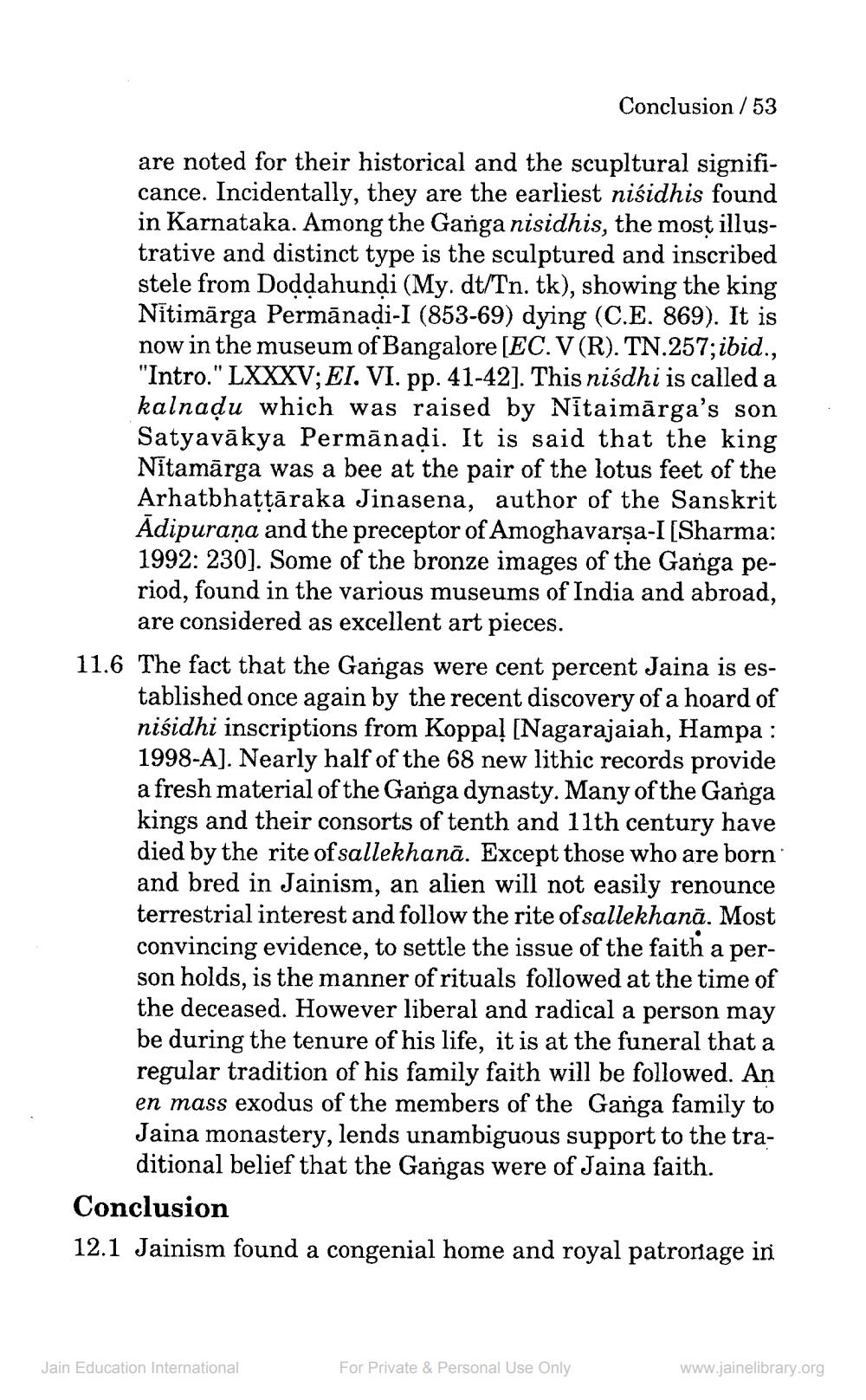________________
Conclusion/53
are noted for their historical and the scupltural significance. Incidentally, they are the earliest nisidhis found in Karnataka. Among the Ganga nisidhis, the most illustrative and distinct type is the sculptured and inscribed stele from Doddahundi (My.dt/Tn. tk), showing the king Nitimārga Permānadi-I (853-69) dying (C.E. 869). It is now in the museum of Bangalore (EC. V (R). TN.257; ibid., "Intro." LXXXV;EI. VI. pp. 41-42]. This niśdhi is called a kalnadu which was raised by Nitaimārga's son Satyavākya Permānadi. It is said that the king Nitamārga was a bee at the pair of the lotus feet of the Arhatbhattāraka Jinasena, author of the Sanskrit Adipuraņa and the preceptor of Amoghavarşa-I [Sharma: 1992: 230]. Some of the bronze images of the Ganga period, found in the various museums of India and abroad,
are considered as excellent art pieces. 11.6 The fact that the Gangas were cent percent Jaina is es
tablished once again by the recent discovery of a hoard of niśidhi inscriptions from Koppa! [Nagarajaiah, Hampa : 1998-A]. Nearly half of the 68 new lithic records provide a fresh material of the Ganga dynasty. Many of the Ganga kings and their consorts of tenth and 11th century have died by the rite of sallekhanā. Except those who are born and bred in Jainism, an alien will not easily renounce terrestrial interest and follow the rite ofsallekhanā. Most convincing evidence, to settle the issue of the faith a person holds, is the manner of rituals followed at the time of the deceased. However liberal and radical a person may be during the tenure of his life, it is at the funeral that a regular tradition of his family faith will be followed. An en mass exodus of the members of the Ganga family to Jaina monastery, lends unambiguous support to the tra
ditional belief that the Gangas were of Jaina faith. Conclusion 12.1 Jainism found a congenial home and royal patronage in
Jain Education International
For Private & Personal Use Only
www.jainelibrary.org




